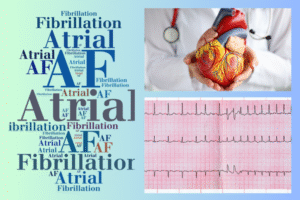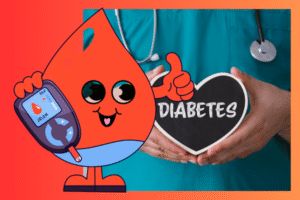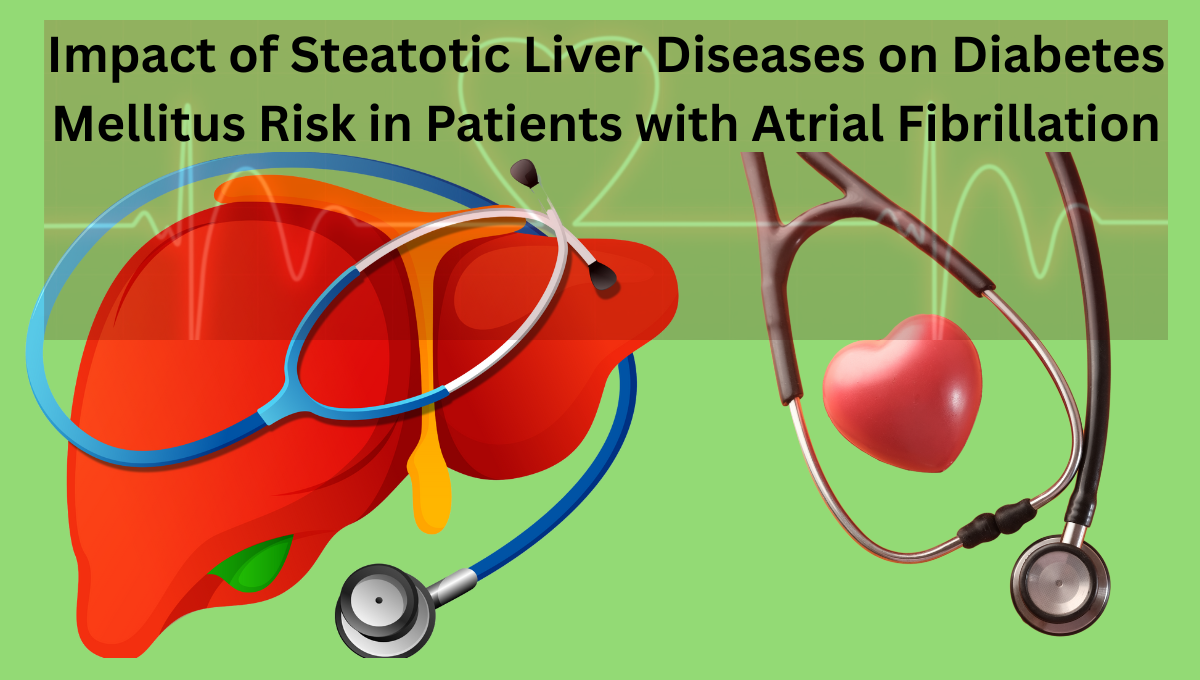Impact of Steatotic Liver Diseases on Diabetes Mellitus Risk in Patients with Atrial Fibrillation
Introduction
What if we informed you that your liver could be the crucial connection between your cardiac rhythm irregularity and fluctuations in blood glucose levels?
Welcome to the interrelated realm of steatotic liver disorders (SLDs), atrial fibrillation (AF), and diabetes mellitus. Although each of these disorders is alarming individually, recent evidence indicates a perilous correlation—SLDs may considerably increase the risk of diabetes in people already treating AF.
Let us examine this intricate relationship and how early identification could alter results.

Comprehending Steatotic Liver Diseases: Non-Alcoholic Fatty Liver Disease (NAFLD)
This is a prevalent kind of SLD, characterized by excessive fat accumulation in liver cells unrelated to alcohol consumption. It is closely associated with metabolic syndrome and insulin resistance.
Metabolic-Associated Steatotic Liver Disease (MASLD)
Recently, specialists have transitioned from the name NAFLD to MASLD to more accurately represent its metabolic underpinnings. This alteration underscores its associations with obesity, diabetes, and hypercholesterolemia.
⚠️ Etiology and Risk Determinants
Suboptimal diet (elevated fat and sugar content)
Inactive lifestyle
Genetic susceptibility
Specific pharmaceuticals
Metabolic syndrome

Atrial fibrillation (AF) is a cardiac arrhythmia characterized by irregular and often rapid heart rhythm.
Summary and Manifestations
Atrial fibrillation is a prevalent kind of arrhythmia that may result in fatigue, palpitations, dizziness, and an elevated risk of stroke.
Common Comorbidities Associated with Atrial Fibrillation: Hypertension
Coronary artery disease
Cardiac insufficiency
Diabetes mellitus
Association Between Atrial Fibrillation and Metabolic Disorders
AF does not function independently. It frequently manifests in metabolically impaired patients, rendering illnesses such as SLDs and diabetes not merely coexisting but significant contributors.

Diabetes Mellitus: A Brief Overview Type 2 Diabetes Mellitus (T2DM)
Type 2 Diabetes Mellitus (T2DM) is a chronic condition characterized by the body’s inability to utilize insulin properly, resulting in elevated blood glucose levels.
Insulin Resistance and Metabolic Syndromes
Insulin resistance is the primary metabolic abnormality in both SLDs and T2DM, and it is exacerbated in AF patients, who already endure inflammatory stress.
The Triangular Relationship: SLDs, AF, and Diabetes The Role of SLDs in Insulin Resistance
Fatty livers secrete pro-inflammatory markers and free fatty acids that disrupt insulin signaling, complicating glucose regulation.
The Correlation Between Cytokines and Oxidative Stress
Elevated levels of inflammatory cytokines such as TNF-α and IL-6 in SLDs exacerbate oxidative stress and impair insulin receptors, which is particularly significant in individuals with atrial fibrillation.
Reasons for Increased Vulnerability in Atrial Fibrillation Patients
AF-induced stress and systemic inflammation already exert pressure on the body. Incorporate liver problems, and it creates an optimal condition for the onset of diabetes.
⚖️ Common Risk Factors Between SLDs and Diabetes in AF Patients 🍟 Obesity and Inactivity
These habits induce fat accumulation in both the liver and abdominal region, exacerbating the issue.
Dyslipidemia and Hypertension
Abnormal cholesterol and hypertension are metabolic companions of sleep-related disorders and diabetes, particularly perilous in people with atrial fibrillation.
Chronic Inflammation and Adipokine Dysregulation
Adipocytes function not merely as storage units; they also produce hormones. When imbalanced, they elevate hepatic fat and diminish insulin sensitivity.
The Detrimental Impact of Hepatic Lipids on Glycemic Regulation The Function of the Liver in Glucose Homeostasis
The liver stores and releases glucose. However, a hepatic steatosis? It resembles a malfunctioning thermostat—erratically releasing sugar into your bloodstream.
Adipose Tissue Accumulation and Hepatic Insulin Resistance
As hepatic cells accumulate lipids, they become unresponsive to insulin, resulting in uncontrolled blood glucose levels—a direct precursor to diabetes.
Clinical Evidence Correlating SLDs and Diabetes in Atrial Fibrillation: Contemporary Research and Cohort Evaluations
Extensive research such as the ARIC and UK Biobank validates that atrial fibrillation patients with non-alcoholic fatty liver disease/metabolic dysfunction-associated steatotic liver disease have a markedly elevated risk of diabetes.
Biomarkers and Hepatic Enzyme Profiles
Increased levels of ALT, AST, and GGT are warning signs, frequently appearing prior to the onset of diabetes or liver cirrhosis.
Predictive Significance of Hepatic Stiffness Assessments
Elastography and FibroScan scores are correlated with the onset of diabetes, particularly beneficial for atrial fibrillation patients having cardiometabolic evaluations.
 Diagnostic Instruments and Surveillance: Liver Elastography in Atrial Fibrillation Patients
Diagnostic Instruments and Surveillance: Liver Elastography in Atrial Fibrillation Patients
Rapid, non-invasive imaging to assess hepatic stiffness—crucial for early diagnosis.
Blood Analyses: ALT, AST, GGT
Standard liver panels can reveal fatty alterations in asymptomatic atrial fibrillation patients.
Role of HbA1c and Fasting Glucose in Early Detection
Baseline glycemic indicators are essential for detecting atrial fibrillation patients progressing to diabetes as a result of hepatic complications.
Integrated Management Approach Interdisciplinary Team Care
Cardiologists, hepatologists, and endocrinologists must cooperate to avert problems in these intricate cases.
Significance of Lifestyle Modifications
Weight reduction, physical activity, and nutritional modifications can ameliorate early SLDs and enhance outcomes in AF and diabetes.
Pharmaceutical Assessment and Enhancement
Medications such as metformin, SGLT2 inhibitors, and GLP-1 agonists enhance hepatic function and glycemic regulation—some also diminish the risk of atrial fibrillation!
Preventive Strategies: Weight Reduction with Exercise
A reduction of even 5–10% in body weight enhances liver fat levels and insulin sensitivity.
Liver-Protective Regimens
Low-carbohydrate, Mediterranean, and DASH diets are beneficial for liver health and promote glycemic regulation.
Cardiometabolic Risk Evaluations
Annual assessment of hepatic function, glucose levels, and cardiovascular indicators is essential.
Obstacles in Clinical Practice: Underdiagnosis of Specific Learning Disabilities in Atrial Fibrillation
Specific learning disabilities can go unnoticed unless screening is intentional—particularly in cardiology environments.
Polypharmacy and Pharmacological Interactions
Patients with atrial fibrillation and diabetes often require many medications, some of which may impose a load on the liver or interact negatively.
Patient Compliance with Sustained Lifestyle Modifications
Altering behavior is challenging. Continuous coaching and support are essential.
 Future Research and Emerging Trends in AI-Driven Risk Prediction Instruments
Future Research and Emerging Trends in AI-Driven Risk Prediction Instruments
Algorithms that analyze electronic health records and imaging data are being created to forecast the transition from severe latent diabetes to diabetes in individuals with atrial fibrillation.
Role of GLP-1 and SGLT2 Inhibitors
Recent investigations indicate that these medications assist in decreasing liver fat and promoting the stability of cardiac rhythm.
New Protocols for Integrated Care
Anticipate increased emphasis on metabolic liver disease in forthcoming atrial fibrillation and diabetes management guidelines.
Conclusion
The association between steatotic liver disease and diabetes in people with atrial fibrillation is not merely coincidental; it constitutes a metabolic chain reaction. By identifying this interrelated risk promptly, healthcare practitioners can implement focused prevention efforts that enhance patient quality of life and mitigate long-term problems.
❓ Frequently Asked Questions
1. Can fatty liver independently induce diabetes in persons with atrial fibrillation?
Affirmative. The liver is integral to glucose metabolism, and its impairment may result in insulin resistance prior to the manifestation of other diabetic symptoms.
2. How do physicians identify early indicators of diabetes risk associated with liver conditions?
Utilizing liver enzyme assays, elastography imaging, and glycemic evaluations such as fasting glucose and HbA1c.
3. Do atrial fibrillation drugs pose a risk to liver health?
Certain anti-arrhythmics and anticoagulants may impose stress on the liver. Consistent surveillance facilitates the early detection of any undesirable consequences.
4. What is the significance of nutrition in the risk associated with this triad of conditions?
An optimal diet diminishes hepatic fat, enhances glycemic regulation, and promotes cardiovascular health. Consider the Mediterranean!
5. Is the correction of fatty liver achievable in individuals with diabetes?
Indeed, by weight reduction, physical activity, and appropriate pharmacotherapy, one can diminish hepatic fat and enhance both hepatic and glycemic health.

